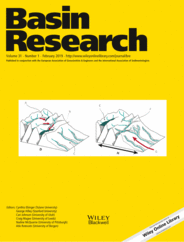
Full text loading...
Use of deep‐water sediments in submarine fans to reconstruct changing erosion onshore is based on the premise of relatively simple transport between source and sink. However, debate continues regarding the degree of sediment buffering and recycling in the sediment transport process. In this study, we investigate the origin of sediment in the Indus Submarine Canyon since the Last Glacial Maximum (LGM; ~20 ka) using zircon U‐Pb dates. Zircon grains in the submarine canyon are resolvably different from those at the river mouth, at least before 6.6 ka, implying a disconnection between the river mouth and the canyon up to that time. Sand may be stored near the river mouth as sea level rose, while finer‐grained sediment was directly transferred into deeper water. Since 1 ka the upper canyon has shown big and rapid provenance changes, most notably a sharp increase in erosion from Nanga Parbat, whose influence is minor in the modern river. Such rapid changes imply a lack of buffering in the recent past. The modern river contrasts with sediments in the canyon in terms of its zircon U‐Pb age populations and may be influenced by significant anthropogenic impact on the terrestrial drainage basin, especially damming.

Article metrics loading...

Full text loading...
References


Data & Media loading...
Supplements

